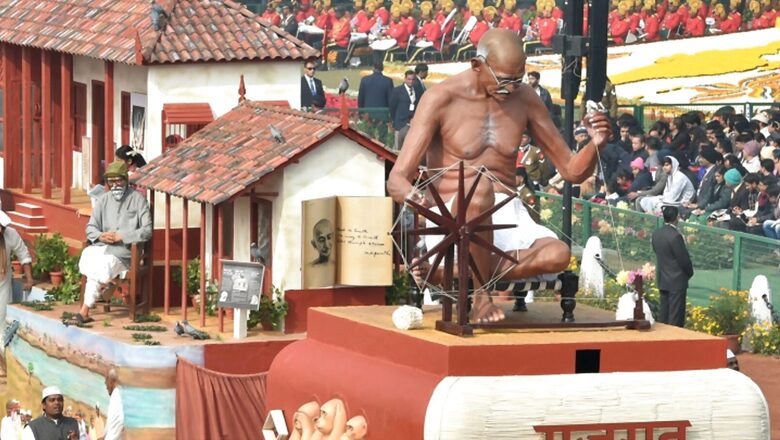
views
Politics is ingrained in Indian society. Be it caste, language or gender, every group aspires political representation and a stake in political power. Political Matrix will focus on these groups and their aspirations in each state of India and decode their electoral choices.
Elections in India provide an opportunity to the marginalised communities to project their aspirations and contribute to the vibrancy of the Indian democracy. These aspirations are shaped by the level of political awareness and mobilisation among these communities. As we know, numbers matter a lot in democracy: numbers give subaltern social groups the capacity to aspire and acquire political influence and hissedari (share) in resources, development and power.
Few months ago, we saw elections in five states of Uttar Pradesh, Uttarakhand, Punjab, Goa and Manipur. Come winter, and Gujarat and Himachal Pradesh will go to polls. My previous article in Political Matrix had focused on the aspirations of Patidars, a powerful community in Gujarat that every political party wants to woo. In this article, I will train my lens on Dalits, a marginalised social community in Gujarat, and what may dictate their political choices.
How the Numbers Stack Up
In Gujarat, the population of Scheduled Castes is estimated at 7 per cent – this includes around 36 castes and social groups. Like in other parts of India, Scheduled Castes or SCs in Gujarat too have not yet evolved as a politically powerful bloc; they are still disparate and heterogeneous social groups.
At a social level, they are suffering all kinds of exclusions but even within the SC population, one may find graded inequalities, identified by Babasaheb Ambedkar as an inherent nature of Indian social system. In the process of democratisation and development, a sense of competition and jealousy has developed among the castes and subcastes of SCs and Dalits. This, at times, may create hindrance in their political consolidation as a big social group.
In Gujarat, Vankar, Valmiki, Khalpa (Chambhar), Meghwal are comparatively bigger communities among SCs. In spite of their impressive numbers, the process of their politicisation is slow, and their representation in politics is yet to become visible. However, government benefits, development programmes, reservation in education and jobs are reaching to them, albeit slowly. This will subsequently help them develop the capacity to aspire, politically.
The Evolving Dalit Politics
The Congress’ regime in Gujarat saw a few political leaders from these marginalised communities emerge on the scene, largely because they traced their roots to the Indian freedom movement. But over time, in the politics of the Congress, these leaders due to various reasons lost prominence. Many Dalit leaders groomed during the Congress’ time have now shifted to the Bharatiya Janata Party (BJP), which has been in power in the state for nearly 27 years.
Although the BJP has developed a strong leadership in the state over the years, it is the Rashtriya Swayamsevak Sangh (RSS) which started working among these communities after Independence. In the last three-four decades, the organisation’s efforts have engineered a shift in the political profile of these marginalised communities. On the foundation of Hindutva, the BJP government’s welfarism has further brought these communities closer to the party.
Yet, social contradictions have challenged the BJP’s expansion mission among marginalised communities. The flogging of Dalits in Una in 2016 and the political mobilisation around it is one such example. Also, incidents like these led to young voices from the community, like Jignesh Mewani, evolve as leaders.
On the other hand, the BJP too has evolved leaders like Ramanlal Vora, Kirit Parmar among others as the Dalit face of its politics.
The Dalits in Gujarat are evolving their politics mostly through local self-governance, by being elected to panchayats, zila panchayats and municipal corporations. Some of them may emerge as future leaders in the evolving Dalit politics in the state.
The Aam Aadmi Party (AAP), a relatively new entrant in Gujarat politics, is also trying to woo Dalits by giving them positions in the party and tickets in local elections. We have to see which of these competing political parties is able to successfully embrace a larger section of the SC community and vice-versa.
The party which is most sensitive to their aspirations for inclusion, dignity and political share and responds to them in a practical and pragmatic way will be able to mobilise a larger section of this historically disadvantaged community in their favour, in 2022 elections.
You can read all the articles in the Political Matrix series here.
Badri Narayan is Professor and Director at GB Pant Social Science Institute, Prayagraj, and author of ‘Republic of Hindutva’. The views expressed in this article are those of the author and do not represent the stand of this publication.
Read all the Latest Opinions here
















Comments
0 comment